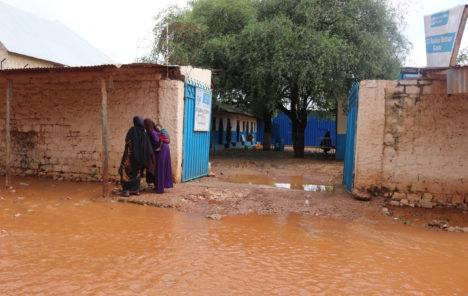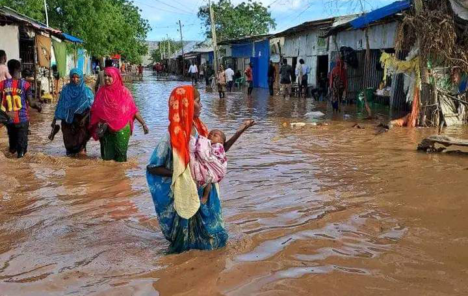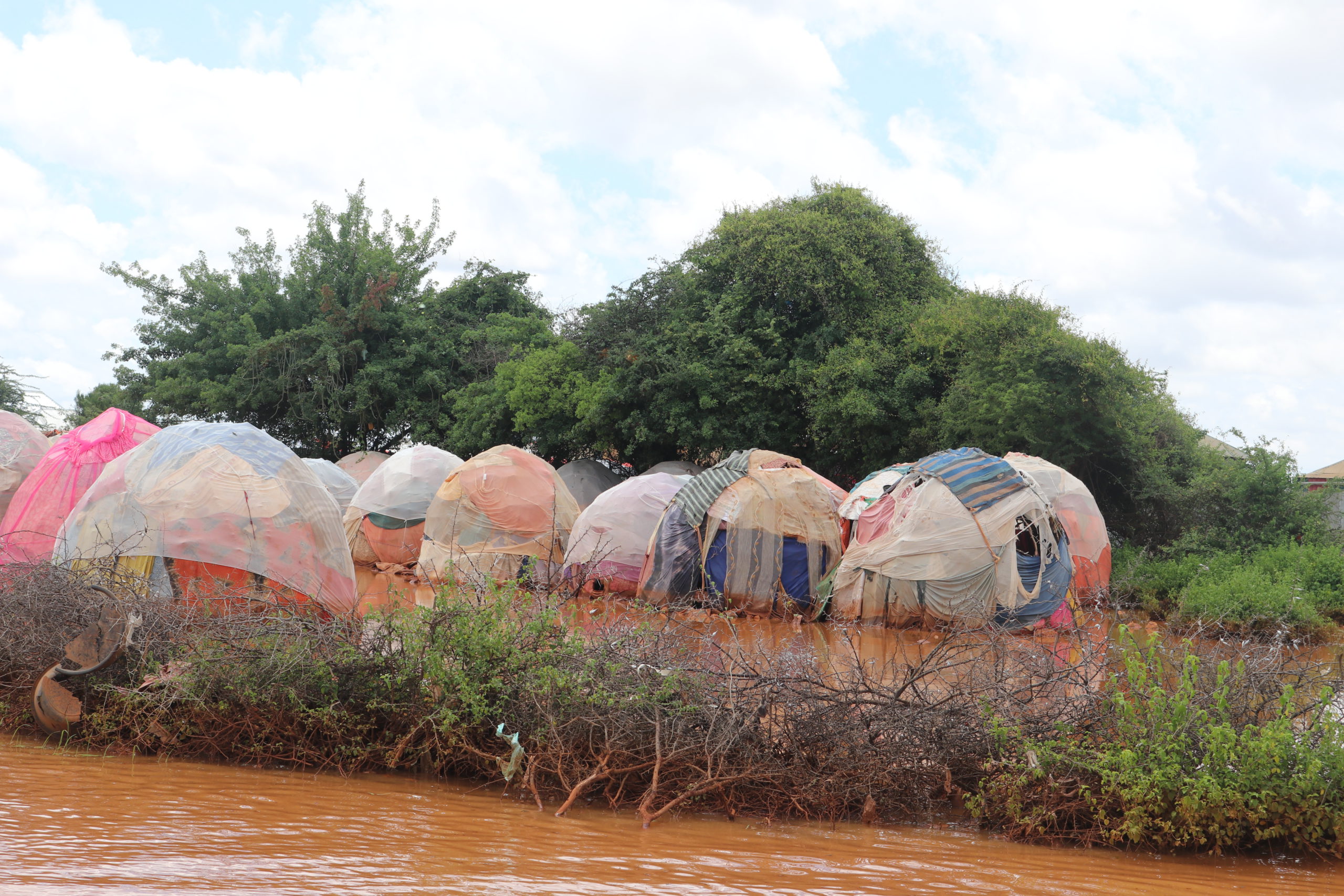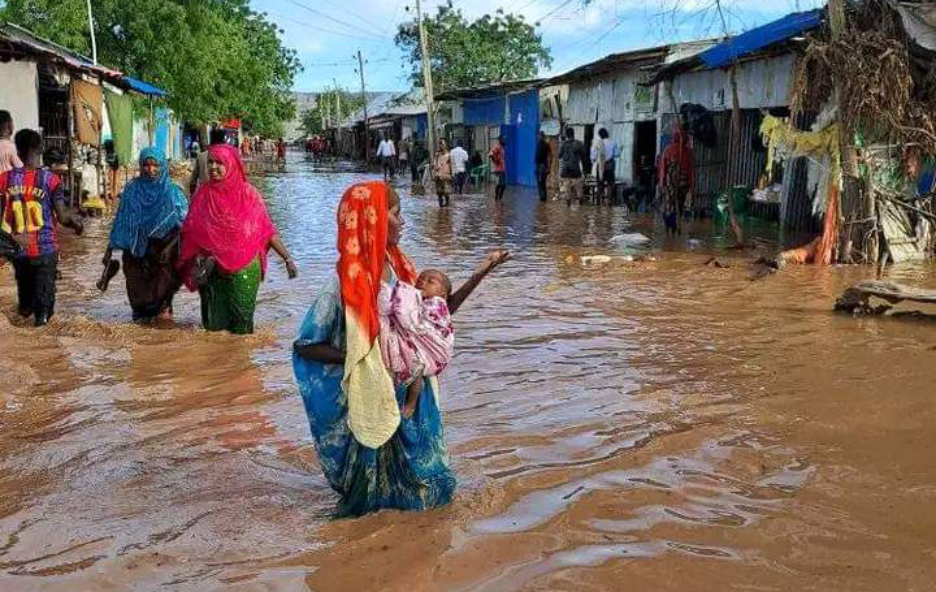Nearly 64 million people in the Horn of Africa region will need emergency aid in 2024, the United Nations Office for the Coordination of Humanitarian Affairs (UNOCHA) has warned in a recent report.
Having faced the worst drought in four decades, rains should have brought relief to the Horn of Africa. But sadly, it only brought further hardship to those already suffering as unrelenting rain turned torrential and, due in part to severe dry grounds, became destructive flooding.
Now, the UN warns millions of adults and children across the Horn of Africa are facing life-threatening hardships that require an urgent response to prevent the situation escalating any further and leading to an even greater loss of life.
There is a window of opportunity to avert large-scale humanitarian disasters in some areas, if funding is urgently scaled up and humanitarian access is expanded.
Heavy rainfall exacerbates crisis
Heavy rains, linked to the ‘El Nino’ weather pattern, struck just as the region was emerging from the worst drought in 40 years, exacerbating a deep humanitarian crisis.
Almost 300 people lost their lives in Somalia, Kenya and Ethiopia alone and over two million across the region were forced to flee their homes.
"Recurrent climate shocks, widespread insecurity and rampant poverty have pushed the people of Somalia to breaking point."
Somalia (one of the poorest countries in the world) was one area hit hardest by the tragic climate crisis. Authorities in Somalia’s capital, Mogadishu, have now declared a state of emergency, as flooding has destroyed homes, farmland, roads, and bridges and caused the widespread closure of schools and hospitals.


Malnutrition reaches emergency levels
In addition to displacement, loss of infrastructure, and lack of education and healthcare across the Horn of Africa, millions of people, including children and young people, are at heightened risk of sickness and even death due to malnutrition triggered by the drought and worsened by the flooding.
Currently, the UN estimates 20 million are at risk of food insecurity.
"High levels of acute food insecurity are prevalent in various parts of the region, following the El Nino-induced flooding in 2023, five consecutive below-average rainy seasons that resulted in one of the worst droughts in recent history, and ongoing conflicts and economic challenges."
In northern Ethiopia, Global Acute Malnutrition rates exceed the 15% emergency threshold, according to the UN report.
And children are not spared from the devastating effects of malnutrition, instead often bearing its brunt, facing profound risks to their development, growth, and immune resilience.
1.5 million children under five are facing acute malnutrition.
In Sudan alone, the nutrition situation is critical with 700,000 children facing life-threatening malnutrition.
Urgent support is needed to address the immediate and underlying causes of malnutrition.
Poor sanitation causing widespread outbreak of disease
In addition to poor food resources, which can negatively impact on immune resilience, limited access to health services and poor water hygiene and sanitation (WASH) practices are leading to major disease outbreaks.
Cholera, malaria, measles, and yellow fever all pose a growing threat, particularly in overcrowded areas.
Scaled-up disease prevention and control methods are essential. We must improve access to clean water sanitation facilities and promote hygiene practices to curb these outbreaks and save lives.
Our response
SOS Children’s Villages Somalia has supported over 14,500 people with integrated services including protection, health and nutrition.
In addition, SOS Children’s Villages’ Emergency Response Programme in the Horn of Africa is implementing immediate, medium-term and long-term strategies to support children and families and save lives.
In the immediate term, life-saving interventions aimed at meeting the basic needs of families are being prioritised. In the medium-term, families and communities are being supported to adapt to climate change and become more resilient.
Our emergency response and longer-term actions include:
- Increase access to sustainable water, sanitation, and hygiene services and emergency WASH kits.
- Ensure access to food and other basic needs through multipurpose cash grants or vouchers to households.
- Provide interim alternative care to children, as well as temporary shelter, mental health and psychosocial support to children and their families.
- Assist communities affected by the drought and food crisis to recover and strengthen people’s livelihoods to improve food security.


